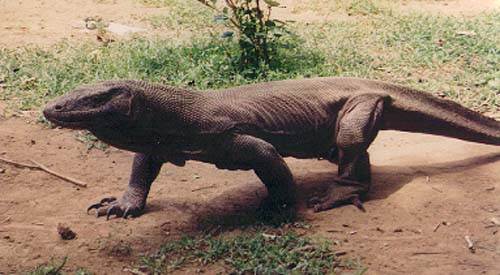

For example, a low per capita metabolic rate requiring an infrequent and inactive hunting strategy (including scavenging), would minimize lethal and nonlethal impacts on prey populations. We suggest that multiple processes weaken the capacity of Komodo dragons to regulate large mammal prey populations.

Nevertheless, substantial temporal and spatial variation in Komodo dragon population energy use did not regulate the population growth rates of either of two large mammal prey species, rusa deer ( Rusa timorensis) and wild pig ( Sus scrofa). The high biomass of Komodo dragons resulted in 1.96−108.12 times greater population energy use than that of apex mammalian predators. Comparison of results from field studies demonstrates that Komodo dragons attain mean population biomass densities that are 5.75−231.82 times higher than that of apex mammalian predator species and their guilds in Africa, Asia, and North America. We next evaluated whether Komodo dragons, like apex mammalian predators, exerted top-down regulation of their large mammal prey.


We first investigated how large mammal prey resources and field metabolic rates of terrestrial apex predators, comprising large mammals and the Komodo dragon ( Varanus komodoensis), influenced their biomass densities and population energy use requirements. Here we report complementary studies examining how interactions between predator per capita metabolic rate and population density influenced the biomass, population energy use, and ecological effects of apex predators on their large mammalian prey. However, differences in species-specific traits, population densities, and interspecific interactions are likely to determine the strength of apex predators’ roles. Apex predators can have substantial and complex ecological roles in ecosystems.


 0 kommentar(er)
0 kommentar(er)
